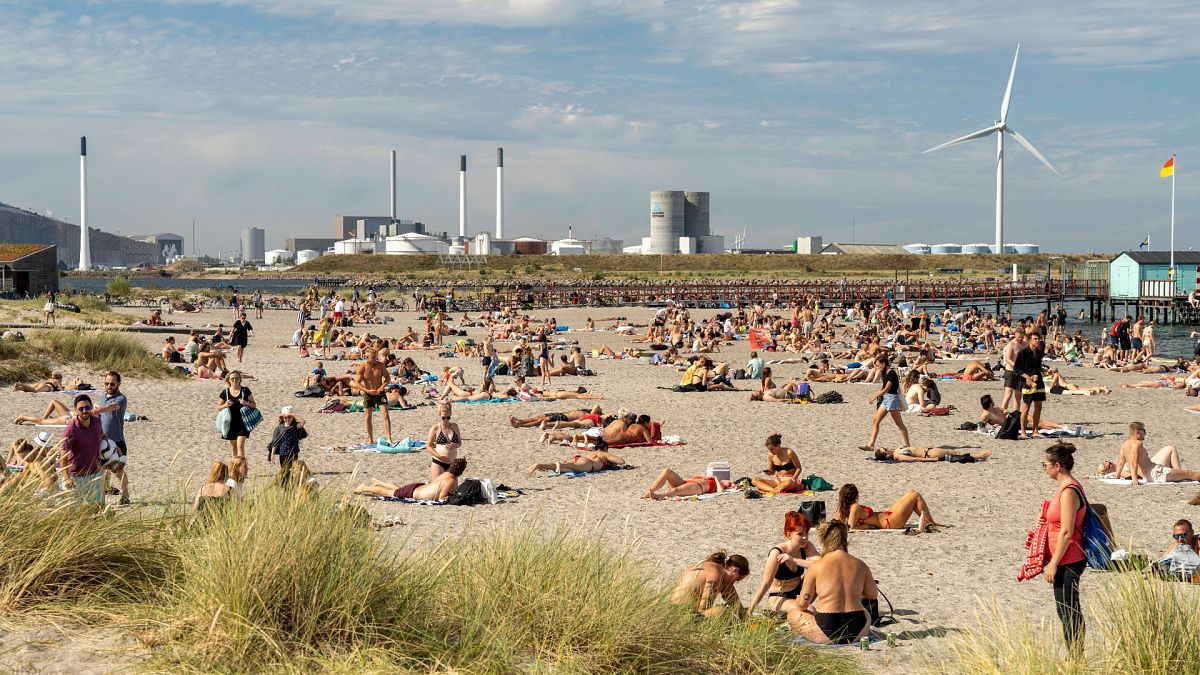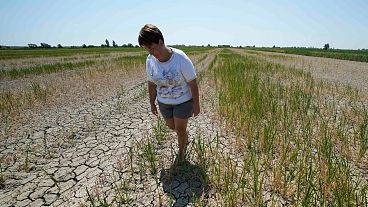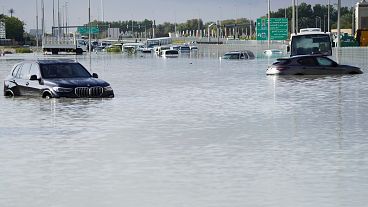As the climate crisis continues to affect Europe, we’re taking a look at some of the ways the continent is changing.
Climate change is impacting all parts of our lives, from the way we power our homes to the heat waves that grip our cities in summer.
Tracking these changes paints a picture of the effect our changing planet is having on people across Europe.
It also shows where countries are getting it right when it comes to mitigating our impact - and where improvements are urgently needed.
Here is Europe’s climate story told through data.
Where is our climate changing the fastest?
Last year was the hottest on record for many European countries and the fifth or sixth warmest for the entire planet.
But some places are heating up faster than others. Between 2012 and 2021, average global temperatures were 1.11 to 1.14 °C warmer than in pre-industrial times.
European land temperatures were between 1.94 and 1.99°C higher than in pre-industrial times during the same time period, according to the European Environment Agency.
What does this mean for people in Europe?
As our climate changes, so too does the need to heat and cool our homes. It’s just one example of the real-term impacts of global warming.
The need for heating across Europe decreased by 11 per cent between 1979 and 2021. Portugal had the biggest decrease followed by Malta, the Netherlands and Ireland.
The need for cooling has increased threefold and some countries that required no cooling 40 years ago now need it. Mediterranean countries like Greece, Spain and Italy were hit hardest by the increased need to combat the heat.
Dive deeper into the data on Europe’s heating and cooling needs here.
Which country has the best (and worst) insulated homes?
As Europe’s energy crisis continues to bite, energy bills are a major cause for concern. And reducing our consumption of electricity and gas helps to cut carbon emissions as well as save money.
Some countries are doing better than others when it comes to insulation. Norway and Germany are the places with the least heat lost from their homes.
At the other end of the spectrum is the UK where old housing stock is a critical issue. Here energy costs for older homes are more than double those of newer ones.
Overall it means UK homes are losing heat three times as quickly as those in Norway and Germany.
Dive deeper into the data on Europe’s home insulation here.
How much has climate change cost the EU over the last 40 years?
Climate-related extremes are becoming more common as time goes on, and their impacts are increasingly evident in the form of heatwaves, floods, droughts and storms.
It isn’t easy to estimate the evolving economic impact that these events are having.
But, in total, climate extremes cost the EU more than €145 billion in the last decade and an estimated €487 billion between 1980 and 2020 across the 27 member states.
The data shows that France, Italy and Germany are being hit hardest by this extreme weather.
And the EEA says these climate change-related losses will only grow if mitigation isn’t taken seriously.
Which EU country has cut carbon emissions the most?
Curbing carbon emissions is the most vital step in mitigating climate change. In the EU, each person produces around seven tonnes of greenhouse gas emissions a year.
This figure is an average and, of course, the reality varies depending on which country you live in. Iceland, for example, has the highest emissions per person whereas Sweden has the lowest.
Emissions per person have dropped by 38 per cent in the last 30 years, however, and all countries except Latvia have seen significant reductions since 1990.
Dive deeper into the data on the cost of climate change here.
How has the EU's use of renewable energy changed?
Renewable power from sources like wind and solar is an important part of cutting these emissions.
The latest figures show that more than a fifth of the energy used in the EU in 2021 came from renewables.
Solar, wind and other 'green' sources contributed 21.8 per cent of the bloc's total energy consumption, according to Eurostat.
It was a 0.3 per cent drop from 2020, but Europe's energy infrastructure is still heading in the right direction.
Analysts note, however, that there is still a long way to go before the EU reaches its renewables target of 40 per cent by 2030.
Which European country uses the most renewable energy?
In 2021, Sweden was once again the EU country with the highest share of renewable energy. Though there is some concern from climate campaigners who point out that most of this comes from biomass which is not truly renewable.
But two non-EU European countries are leading the way. Iceland gets the highest share of energy from renewables with the majority coming from geothermal sources. Norway comes just behind with 76 per cent of its energy coming from renewables a high proportion of which is hydropower.
Others are falling behind with 15 of the 27 EU members reporting renewables shares below 21.8 per cent. The lowest proportion of renewables can be found in Luxembourg, Malta, the Netherlands, Ireland and Belgium.
Dive deeper into the data on Europe's renewable energy use here.



